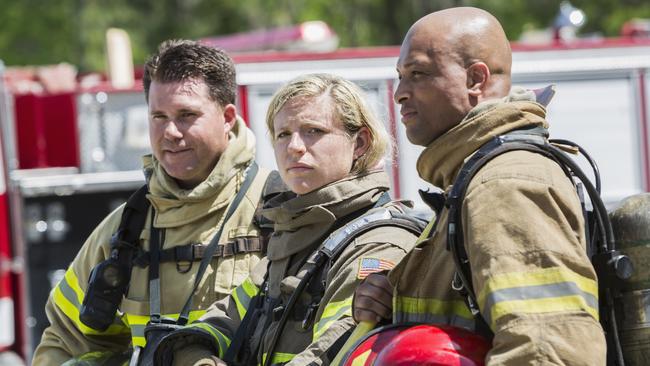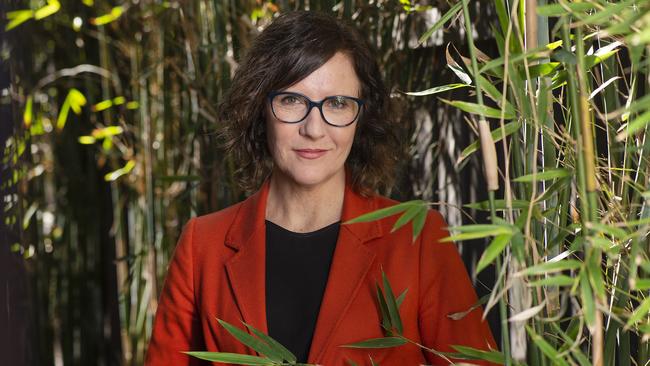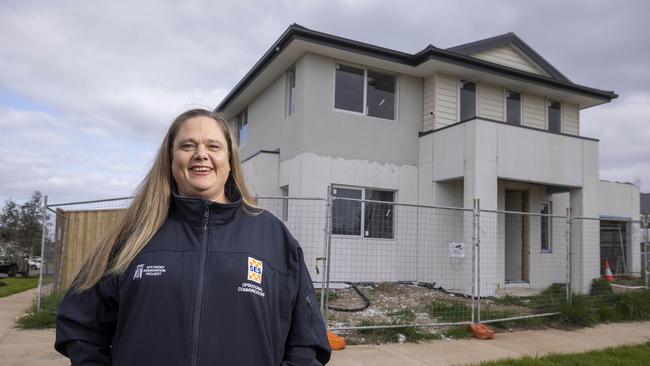Suburbtrends: Rising house prices force essential workers out of Melbourne’s inner city
Essential workers like nurses and firefighters are being priced out of buying a house in more than 320 suburbs across Victoria, with Suburbtrends data analysis now labelled “grim”.

Property
Don't miss out on the headlines from Property. Followed categories will be added to My News.
House-hunting nurses, cops and firefighters are swarming houses in Melbourne’s west after being priced out of the inner city ‘burbs.
Exclusive new research from Suburbtrends has revealed that a staggering 328 suburbs across Victoria are out of reach for essential workers with a top budget of $600,000 for a house — and more than 1330 suburbs nationwide.
Suburbtrends founder Kent Lardner said the analysis was grim reading.
RELATED: Melbourne housing affordability: Capsule ‘space pods’ soar in price
Housing affordability crisis: Parents build larger houses for kids to live at home longer
First homebuyer working two jobs struggles to raise house deposit
“If we are to keep essential workers in the cities, we may need to start thinking outside the box and back to what was more common during the 19th and early 20th centuries, when Australia was undergoing rapid industrialisation and urbanisation — company housing,” Mr Lardner said.
“While this still exists in mining and tourism sectors today, we may need to consider this as an option for many essential workers in some of our most expensive cities.”

Essential workers are generally those who work in health and emergency services, utilities, freight and logistics, transport, education, aged care, essential retail and supply chains, but can encompass anyone required to maintain priority services.
For the purpose of their research, Suburbtrends looked at agent advised sales over the past year and then calculated the 25th percentile for both houses and units to determine whether or not the suburbs would be affordable to workers like police officers, firefighters and nurses whose incomes typically lag behind other careers.
In suburbs surrounding the Royal Melbourne Hospital, an essential worker would be priced out of both the housing and unit markets.


In fact, there are just 54 suburbs in Greater Melbourne where emergency workers could still buy a house for under $600,000, including Broadmeadows, Tarneit and Melton, which is a 100km round-trip on toll roads to and from the flagship hospital.
Ray White Melton director and auctioneer Joe Mavrikos said he had noticed a spike in essential workers buying in the area who seemingly outweighed other demographics.
“They see the value in the area and as well as the employment opportunities in the western suburbs,” Mr Mavrikos said.
“There’s a lot of nurses, but also other people across the whole emergency services … a lot of them are out of town buyers are coming here because of the affordability. It’s close to hospitals in Sunshine and to the freeway for those working in the city.”

YPA Glenroy auctioneer David Taylor also said there was a high number of nurses looking to buy in Broadmeadows who were “acting fast” once interested in a house, due to high competition.
The new PropTrack Housing Affordability Index released yesterday revealed breaking into the market across Australia is the most challenging it has been in at least three decades, with Victoria among the worst off.
Mr Lardner’s Suburbtrends analysis shows affordability doesn’t get much better outside of the big cities, with 84 regional suburbs in Victoria out of reach for a buyer with a $600,000 budget or with fewer than five listings.
However there are 180 suburbs where a unit or house is still under budget.

Meanwhile, an recent Anglicare Australia report revealed many of Australia’s essential workers would also struggle to pay rent, with analysis of 45,992 available listings showing that a firefighter would only be able to afford 1459 (3.2 per cent) of listed rental properties, while a teacher could afford 1507 (3.3 per cent), a nurse 666 (1.5 per cent) and an early childhood educator just 428 (0.9 per cent).
And the lack of affordable housing is having impacts on staffing, with a number of hospitals nationally struggling to provide services.

Australian Nursing and Midwifery Federation federal secretary Annie Butler said lack of access and supply of affordable housing had become an increasing concern for their 322,000 strong membership.
“In most of our capital cities, we know from our members’ feedback that the majority of frontline nurses and midwives cannot afford to rent a home or an apartment close to major hospitals in Sydney or Melbourne,” Ms Butler said.
HOW I MADE IT WORK AS AN EMERGENCY SERVICES WORKER

Natasha Child was only able to break back into the property market after her divorce after a developer gave her a $20,000 rebate for being an emergency services worker.
The single mother and SES worker bought into a Villawood Properties’ estate in Melbourne’s north, and got the cash back as part of the developer’s Care Worker Support Program.
Now short-listed for an Urban Development Institute of Australia award, it provides professions such as police, paramedics, firefighters, nurses, teachers and other carers a discount of up to $20,000 on their block of land.

Since it was introduced five years ago in Geelong, it has now helped 239 Victorian essential workers save almost $4m combined as they buy a new home.
“To buy for me and the kids, I couldn’t afford a property without (the program),” Ms Child said.
“I wanted to get back into the property market, but this was the deciding factor as to whether or not I would.”
A project manager for the SES Operational Communications department, she said she didn’t “chase the money” but was glad for the assistance.
“It’s absolutely hard for people at my age of 50 to get in (to the market),” she said.
“I had a $110,000 deposit and the Villawood Care Worker Program gave me a $20,000 rebate at settlement which really helped me keep my head above water and meant I had the money set aside for things like blinds, fences and landscaping.”
Sign up to the Herald Sun Weekly Real Estate Update. Click here to get the latest Victorian property market news delivered direct to your inbox.
MORE: Spring market house tips: Experts explain if you should buy or sell first
Melbourne suburbs where property upgraders, downsizers should make their next move
PropTrack Home Price Index: Melbourne apartment prices outpacing houses in August


